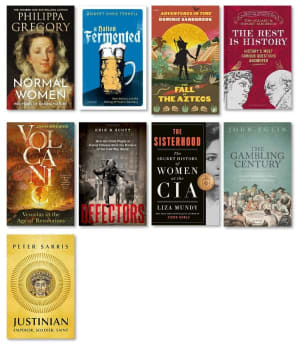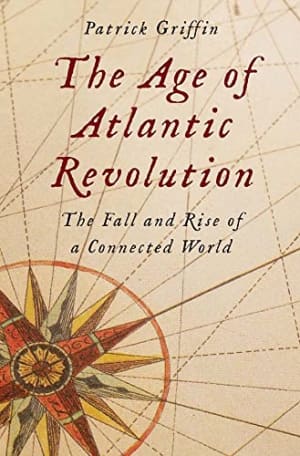I admit that I bought this book without too much research about what it was about: from the picture on the front cover and title I got the vague idea that I was buying something on German medieval history, which struck me as potentially quite interesting, and not something I knew a great deal about. I did briefly look into the author - Martyn Rady is a professor of Central European History at University College London and has previously published a well-received book on the Habsburgs (The Habsburgs: The Rise and Fall of a World Power (2020)).
In fact, Professor Rady’s book covers all Central European history from the Roman empire right up to the recent invasion of Ukraine by Russia. It wasn’t quite what I expected, but I enjoyed it, nonetheless.
The first point to note about this book is that it has a lot to squeeze into its 515 pages; the author must do justice to a lot of topics which easily justify books in their own right.
To mention just a few: barbarian migrations and the resulting collapse of the Roman Empire; Christianisation and the conversion of pagans; the arrival of Slavs and Hungarians; Charlemagne and the Holy Roman Empire; Mongol and Tartar invasions; the Reformation; Ottoman Turks; Napoleon; the 1848 Revolutions; unification of Germany in 1871; the First and Second World Wars; post-war communist states; and the fall of the Berlin Wall and integration into the EU.
So how does he do? Quite well, in my opinion. Inevitably, a lot of those areas do not necessarily get the depth of analysis they deserve; even within the limited page count the author was working with, from time to time I felt a particular subject matter could have justified a bit more attention. But a book like this, which covers such a large number of countries over a long time period, should be judged on its ability to draw some meaning from such a volume of subject matter. What makes Central Europe distinctive? What themes recur throughout its history? The author provides some answers to those questions, so in my opinion makes the book worth reading.
What is Central Europe?
The most obvious starting point for any book on Central Europe is to get some idea of what it is. The concept of Mitteleuropa goes back to the Napoleonic Wars to indicate the bits of Europe with German rulers who Napoleon allowed to stay in power: in other words, it wasn’t France, and it wasn’t Russia, it was the bit in-between. Later German writers were keen on the idea as well, usually to indicate the parts of Europe they thought Germans should control.
The author is both more inclusive in his definition, and less precise, which seems to feed into some of his ideas of what makes the region distinctive. As he says in the introduction, the western edge is generally regarded as the river Rhine; but its Eastern boundary has always been a bit more ambiguous, partly because it comes across the Great European Plain, so lacks a clear geographical boundary. Of course, that lack of an Eastern boundary is the source of one of the recurring themes of the region’s history, namely invasion: Goths, Huns, Hungarians, Mongols, Turks and, most recently, Russians, have all seen that big expanse of flat land as an invitation for expansion (although, to be fair, it is worth noting that some invaders, such as Napoleon and Hitler, have gone in the other direction).
Relationship with Western Europe
The author makes clear that whilst the history of Central Europe has much in common with Western Europe, it embraced ideas and trends differently, and was often the source, rather than the recipient, of much of what is thought of as European politics, religion, and culture.
The most obvious example of that is the Reformation, which originated in Germany with Martin Luther, and was sustained by the Holy Roman Empire’s unique political set up. The way the region reacted to religious diversity was also different. In Western Europe, we tend to think of religious toleration as a practical solution to the wars of religion which accompanied the Reformation.
In fact, I found it interesting that in Central Europe it was the other way round: some degree of accommodation and tolerance was often the initial reaction in parts of the Holy Roman Empire. In many cases, hardened attitudes and policy came later, principally as a result of the Counter-Reformation, and a series of Habsburg rulers who attempted to re-impose Catholicism by force during the 30 Years’ War (1618-1648).
The Beast from the East
The book opens and closes with the idea of the ‘dogmen’, a mythical man/dog hybrid thought to inhabit the edges of civilisation. The idea of the dogman recurs as a motif for fear of the unknown and threatening forces that inhabit the vast plains of Europe’s east. The author states in the final paragraph of the book that ‘For Central Europe, threats have always come from all directions, but historically those coming from the east have been the more terrible.’
The Cold War period was relatively unique in Central European history as marking a period in which most of it was firmly drawn into the cultural and political ambit of its Eastern neighbour, Russia. In that period, the concept of Central Europe fell into abeyance: Europe was split down the middle into two, on one side Western capitalist democracies; on the other, Eastern communist dictatorships.
In the author’s telling, for Central European countries such as Poland, Hungary, and Czechoslovakia (as it then was), communism and their newly close relationship with Russia never sat easily, with each being a source of attempted revolution and/or political dissidence. The author is unsparing in his critique of this period of the region’s history, although he also acknowledges the challenges (and benefits) that many Central European countries have experienced since EU accession.
The nation state
For the author, Central European historiography has been dominated by the rise of the nation state in the nineteenth and twentieth centuries; as a result, Central European historians have typically sought to reinterpret the history of the region as providing an origin story for a ‘people’, whether that is German, Hungarian, Polish, Czech, Slovak, or otherwise. In fact, attempts to pigeonhole people as belonging to one group or another have never been straightforward. For most of its history, Central Europe was a complex patchwork of different political boundaries, languages, and religions. Many people were multilingual and / or spoke hybrid languages that are now extinct. For the author, “National belonging was not a matter of fact but of decision”. Identity was never straightforward.
An early twentieth century soldier wrote his diary in four different languages – German for regimental matters, Slovene when thinking of his girlfriend, Serbian for songs he recalled, and Hungarian for his sexual fantasies. Tragically, it took two world wars, and the death and forced movement of millions, to create a Europe where the ‘nation’ and the ‘state’ largely cohere, and even now, linguistic minorities are still a feature of many Central European countries.
The bureaucratic state
The author has a lot to say about Central European law and the growth of state power, and how these interacted. I found these parts of the book particularly enlightening, as they appear to be the author’s principal academic areas of focus.
One way in which medieval Central Europe was relatively distinctive was the degree of political representation enjoyed locally by noblemen, city folk and villagers. In the Middle Ages, parliaments (or diets as they were commonly called), assemblies and self-governing communities were commonplace and enjoyed surprising degrees of autonomy from central control. The contrast with medieval France and England, where strong central governments predominated, is revealing. What explained this difference? Partly it was a result of a flat feudal hierarchy: Central European noblemen were relatively numerous and empowered, with a direct relationship with their ruler (a relationship for which the diet was the principal stage). It was also due to the high risk of invasion, which forced rulers to work with nobles and, on many occasions, accede to their demands.
But, perhaps ironically, Central Europe then became the birthplace of the modern bureaucratic state from the seventeenth century onwards. This was in part linked to the Counter-Reformation and the attempts of Holy Roman Emperors to reimpose control on recalcitrant local rulers and a vast multi-ethnic empire. The region gave rise to the social science of Cameralism which sought to run the state along scientific principles, with a particular emphasis on state control and regulation of the economy.
Conclusion
An excellent overview of a sometimes sprawling subject matter; but whilst covering a lot of ground in relatively quick order, the author also manages to draw out interesting themes and ideas from the vast quantity of material he must deal with. In particular, if you are interested in the history of state bureaucracy, this is an ideal book for you. This is a book which is both informative and thought-provoking.
Book details
(back to top)- Title -
The Middle Kingdoms : A New History of Central Europe
- Author -
Martyn Rady
- Publication date -
May 2023
- Publisher -
Allen Lane
- Pages -
640
- ISBN 13 -
9780241506158
- Podcast episode -
Western Civ: The Middle Kingdoms A New History of Central Europe
- Podcast episode -
- Amazon UK -
- Amazon US -



